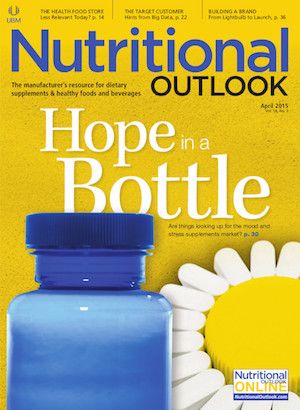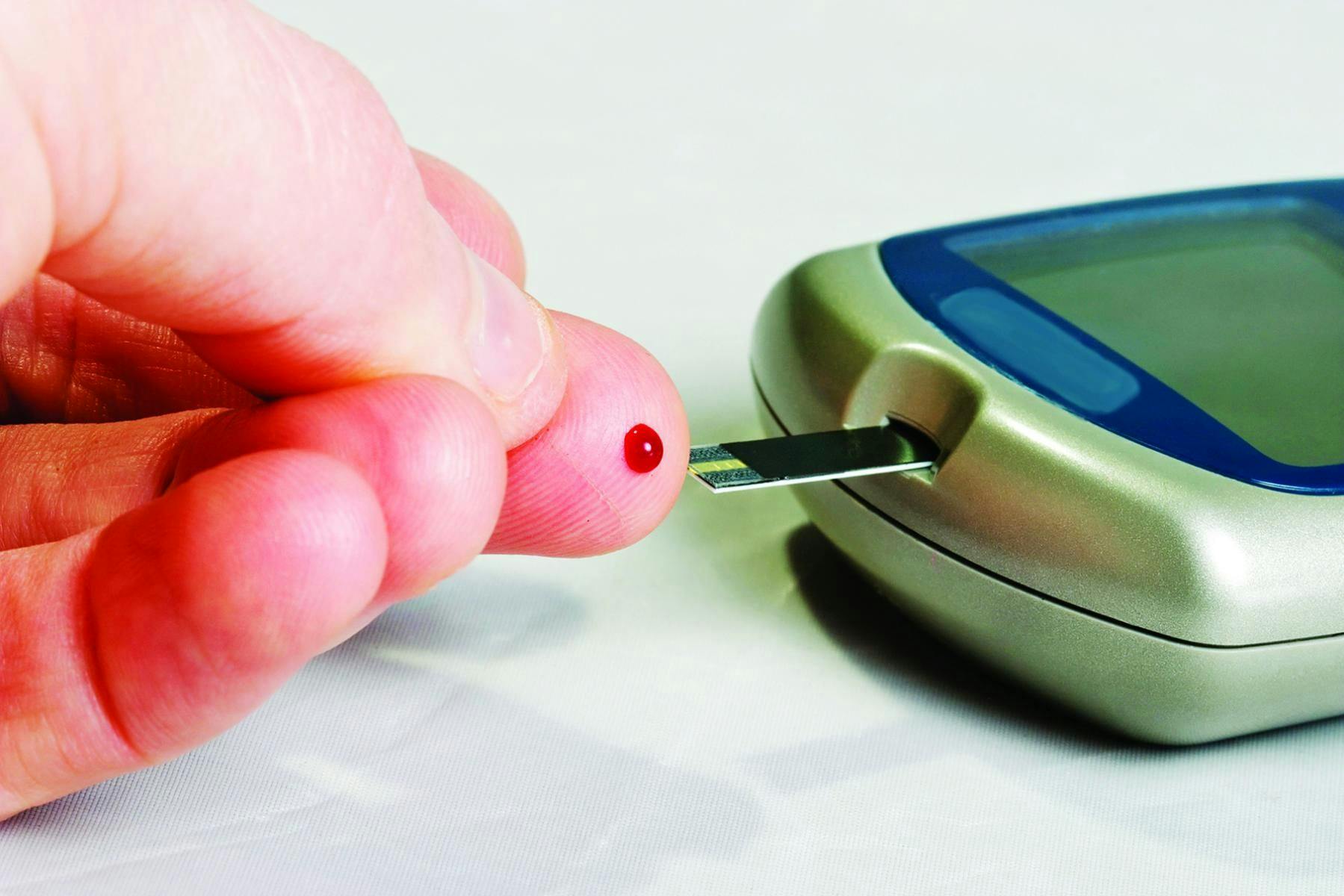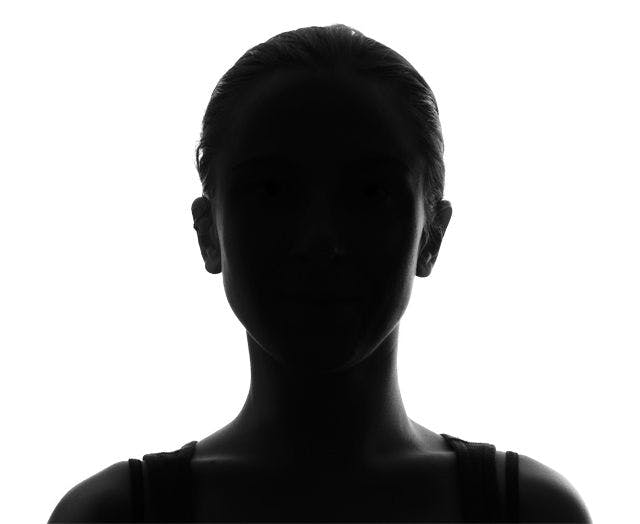Lutein and Zeaxanthin Benefit Young and Old Alike
AREDS2 highlighted the importance of lutein and zeaxanthin for AMD, but recent studies also show benefits for younger populations.

AREDS2 highlighted the importance of lutein and zeaxanthin for AMD, but recent studies also show benefits for younger populations.
Xanthophylls are yellow pigments and one of the two major subgroups in the carotenoid family. Lutein and zeaxanthin are two carotenoids within the xanthophyll family. From a nutritional standpoint, lutein and zeaxanthin are most well-renowned for their eye health benefits because they are the only two carotenoids accumulating in the macula of the retina in humans. These carotenoids form what is referred to as the macular pigment, which serves to filter harmful blue light and provides antioxidant benefits to protect retinal tissue.1 Research studies suggest beneficial effects related to nutritional supplementation with lutein and zeaxanthin, including prevention of macular degeneration, a leading cause of vision loss expected to impact nearly 200 million people globally by the year 2020.2 In fact, this research was the basis for conducting the well-known AREDS2 (Age-Related Eye Disease Study 2) trial.
The original AREDS (Age-Related Eye Disease Study) found that daily supplementation with a combination of antioxidant vitamins and minerals reduced the risk of developing advanced age-related macular degeneration (AMD) by 25%. AREDS2 was conducted as a follow-up study between 2006 and 2012 and included 4,203 individuals aged 50 to 85 at risk for development of advanced AMD.3 The purpose of AREDS2 was to determine if supplementation with the nutrients lutein/zeaxanthin and omega-3 fatty acids yielded additional benefits for AMD prevention beyond the original AREDS formulation. Overall, the results of the study failed to show increased protection from AMD with the added lutein and zeaxanthin as well as omega-3 fatty acids beyond what was found in the original AREDS study. However, the researchers then looked at the data by dividing it into groups based on dietary intake of lutein and zeaxanthin. The groups with the lowest dietary intake of these nutrients showed significant increased protection against progression to advanced AMD from consuming the supplemental lutein and zeaxanthin. Thus it’s possible that those with the lowest dietary intakes of these carotenoids would benefit substantially by supplementing with these nutrients.
A further, and potentially significant, confounding factor pointed out by researchers includes the issue of competitive absorption of carotenoids. As the AREDS formula contains beta-carotene, the authors suggest that administering lutein and zeaxanthin concurrently with the original AREDS supplement (as was the case in AREDS2) could have diluted the protective effect of the latter carotenoids on the basis that significant quantities remained unabsorbed due to competitive absorption with beta-carotene.
Given this confounder, it’s not possible to conclusively say whether the addition of lutein and zeaxanthin to an AREDS-type multinutrient would yield significant additional protection against the progression of macular degeneration. For this, additional long-term studies excluding beta-carotene need to be conducted. However, more recent studies beyond AREDS2 continue to point to the substantial eye health benefits of supplementation with both lutein and zeaxanthin in individuals with macular degeneration as well as in those who are healthy.
Lutein and Zeaxanthin in AMD
Yang-Mu Huang and colleagues from Beijing conducted a randomized, double-blind, placebo-controlled study in 112 individuals aged 50 and older with early AMD to assess changes in retinal function with lutein and zeaxanthin supplementation.4 The researchers divided study subjects into four groups, including placebo, 10 mg lutein, 20 mg lutein, and 10 mg of lutein plus 10 mg of zeaxanthin daily. Supplementation commenced for a two-year period, and the researchers assessed measures of retinal sensitivity at baseline, at 48 weeks, and at two years.
Results of the study showed that all groups besides placebo achieved higher macular pigment optical density scores (MPOD). A higher density of macular pigment, composed primarily of lutein and zeaxanthin, is thought to confer better eye protection. Furthermore, retinal sensitivity was significantly enhanced in the groups receiving 10 and 20 mg of lutein daily versus placebo. While the authors clarified that the duration of the current study was too short to determine whether lutein supplementation reduces the progression of AMD, lutein supplementation was clearly shown to enhance parameters of retinal function.
Researchers in the field of carotenoid and eye disease research recently published a study in which they took a different approach to looking at the relationship of lutein and zeaxanthin in preventing AMD. Led by Kristen Meyers of the University of Wisconsin School of Medicine and Public Health,5 the group analyzed data from the CAREDS (Carotenoids in Age-Related Eye Disease Study) cohort, which was an ancillary study within the Women’s Health Initiative Observational Study, conducted between 2001 and 2004. The researchers developed a genetic model based on the presence of SNPs (single nucleotide polymorphisms, or variations in DNA occurring where a single nucleotide on a chromosome differs within populations) from 24 candidate genes dealing with carotenoid status, including those related to the binding, metabolism, or transport of macular carotenoids. These gene variants were assessed for their association with AMD. The genetic model was developed to allow for scoring of genetic risk and was found to be able to significantly distinguish between AMD cases and controls. Variants in specified genes were associated with the serum and/or macular status of the carotenoids lutein and zeaxanthin.
Using the genetic model on the CAREDS cohort, the researchers found that those women in the highest quintile of genetic risk score had an odds ratio of 3.1 for having AMD compared to women in the lowest quintile of risk score. According to the researchers, this genetic model significantly adds to the body of evidence indicating a protective role of the macular carotenoids lutein and zeaxanthin against the risk of AMD.
Rong Liu and colleagues from Xi’an Jiaotong University in Xi’an, China, conducted a recently published meta-analysis of randomized controlled trials to evaluate visual performance with lutein and zeaxanthin supplementation in individuals with AMD.6 Eight trials involving 1176 individuals with AMD were included in the meta-analysis, with the main outcome measures involving visual acuity, contrast sensitivity, glare recovery time, and subjective perception of visual quality.
Of the eight studies selected, six were conducted in Europe, one in China, and one in the United States. The duration of the studies was between 6 and 36 months, while the dosage of lutein ranged between 6 and 20 mg per day and zeaxanthin between 0 and 10 mg per day. The final analysis found that supplementation with lutein and zeaxanthin resulted in significant improvements in visual acuity and contrast sensitivity in individuals with AMD. The results also showed that the magnitude of benefits increased in a dose-dependent fashion. In addition, the authors noted that the improvement of MPOD levels in study subjects significantly correlated to the improvement of visual acuity and contrast sensitivity, indicating a significant benefit of lutein and zeaxanthin supplementation in those with AMD.
Lutein and Zeaxanthin for Healthy Eyes
While macular degeneration is a disease often associated with aging eyes, research is also pointing to the ability of lutein and zeaxanthin to enhance visual function in young, healthy individuals. Emily Bovier from the State University of New York, Oswego, (Oswego, NY), and Billy Hammond from the University of Georgia (Athens, GA) recently conducted a randomized placebo-controlled trial to assess the effects of lutein and zeaxanthin on visual processing speed in young healthy adults.7 Individuals aged 18–32 were enrolled in this four-month trial and randomized into three groups: the first group consumed a zeaxanthin supplement (20 mg daily); the second consumed a combination supplement containing 26 mg zeaxanthin, 8 mg lutein, and 190 mg of fatty acids from fish oil; while the third group consumed a placebo. The researchers assessed the subjects for changes in MPOD and a measure of temporal vision known as temporal contrast sensitivity function (tCSF). Increases in MPOD and tCSF were noted in both supplemental groups, while no change was seen in the placebo group. The magnitude of effect was similar in both groups receiving the zeaxanthin and lutein supplements, translating to a nearly 20% increase in MPOD and a corresponding 20% increase in temporal processing speed from baseline levels. These results are significant in that the study highlights the benefits of zeaxanthin and lutein supplementation in a young population that is already at peak function, indicating that the use of xanthophyll carotenoids can further optimize visual function beyond normal levels.
In a second double-blind placebo-controlled study, Billy Hammond and colleagues from the University of Georgia investigated the impact of lutein and zeaxanthin supplementation on recovery from photostress, glare, and chromatic contrast.8 Photostress occurs with intense, short-term exposure to bright light, while chromatic contrast refers to the ability to distinguish colors. Similarly, glare can cause discomfort and disability, leading to a reduction in visual performance. In this year-long study, 150 young, healthy participants were randomized to a supplement consisting of 10 mg lutein and 2 mg zeaxanthin daily, or a placebo. The results of the study showed that the lutein and zeaxanthin supplementation increased MPOD and significantly improved chromatic contrast as well as recovery time from photostress. Glare recovery trended towards improvement, but the changes were not statistically significant. This study provides further evidence for the ability of lutein and zeaxanthin to enhance visual performance in young, healthy subjects.
In an interesting study on Chinese drivers, Yuan Yao and colleagues from Shanghai Jiao-tong University in China conducted a one-year trial to assess the effects of lutein supplementation on visual performance.9 In the study, the researchers recruited 120 healthy participants between the ages of 25 and 47 who were employed as drivers with a daily average working time of 10 hours over the previous two years. The randomized, double-blind, placebo-controlled study consisted of drivers supplementing with lutein (20 mg/day) or a placebo and included assessments for visual acuity, MPOD, and visual performance. At the end of the one-year study period, participants in the lutein group had significant increases in MPOD, while no changes in MPOD, were noted with placebo. Additionally, lutein supplementation significantly improved contrast and glare sensitivity, which are particularly important attributes for driving during the day and at night. Furthermore, drivers were asked to complete the National Eye Institute 25-Item Visual Functioning Questionnaire, a validated measure of visual function. Those in the lutein group showed significant improvements in the driving subscale of the standardized questionnaire. The investigators also noted a trend towards enhanced visual acuity in the lutein group; however, the improvements in visual acuity did not reach levels of statistical significance. These results pointed to substantial benefits of lutein for drivers, especially while driving at night or under low-light conditions.
Benefits for All
The central role of lutein and zeaxanthin for eye health is abundantly clear from the research. The importance of these xanthophyll carotenoids from a functional and structural point of view in the retina and macula of the eye make them indispensable nutrients for healthy vision. Additional research will ultimately reveal the extent of their ability to prevent the progression of eye diseases like AMD; however, supplementing with these nutrients is a sensible strategy in the elderly at risk for advanced eye diseases as well as in young, healthy individuals looking for an edge to optimize their already healthy vision.
Sidebar: Lutein for Every Age
Lutein supplier OmniActive Health Technologies (Morristown, NJ) is one supplier committed to spreading the word that lutein benefits all. The company rang in the second anniversary of its award-winning Lutein for Every Age campaign at the 2015 Natural Products Expo West trade show in Anaheim.
The goal, says Lynda Doyle, OmniActive’s vice president, global marketing, is to raise awareness not only among industryfolk but also among consumers and healthcare providers. “We’re trying to educate about the importance of early and consistent lutein intake over a lifetime-so starting young and continuing on-because if you think about macular degeneration, that doesn’t happen overnight,” she told Nutritional Outlook. Instead, AMD is the result of “a constant bombardment of the different stressors of your eye over a lifetime,” including heavy use of computers, tablets, and other electronic devices. The company is now boosting the social media arm of its campaign, ironically and sensibly, to reach those very consumers staring at tablets and smartphone screens daily.
-Jennifer Grebow, Editor-in-Chief
References
- Vishwanathan R et al., “Macular pigment optical density is related to cognitive function in older people,” Age Ageing, vol. 43, no. 2 (March 2014): 271–275
- Wong WL et al., “Global prevalence of age-related macular degeneration and disease burden projection for 2020 and 2040: a systematic review and meta-analysis,” The Lancet. Global Health, vol. 2, no. 2 (February 2014): e106–116
- Age-Related Eye Disease Study 2 Research Group, “Lutein + zeaxanthin and omega-3 fatty acids for age-related macular degeneration: the Age-Related Eye Disease Study 2 (AREDS2) randomized clinical trial,”JAMA, vol. 309, no. 19 (May 15, 2013): 2005–2015
- Huang YM et al., “Changes following supplementation with lutein and zeaxanthin in retinal function in eyes with early age-related macular degeneration: a randomised, double-blind, placebo-controlled trial,” The British Journal of Ophthalmology,vol. 99, no. 3 (March 2015): 371–375
- Meyers KJ et al., “Genetic determinants of macular pigments in women of the Carotenoids in Age-Related Eye Disease Study,” Investigative Ophthalmology & Visual Science, vol. 54, no. 3 (March 2013): 2333–2345
- Liu R et al., “Lutein and zeaxanthin supplementation and association with visual function in age-related macular degeneration,” Investigative Ophthalmology & Visual Science, vol. 56, no. 1 (December 2014): 252–258
- Bovier ER et al., “A randomized placebo-controlled study on the effects of lutein and zeaxanthin on visual processing speed in young healthy subjects,” Archives of Biochemistry. Published online ahead of print December 4, 2014
- Hammond BR et al., “A double-blind, placebo-controlled study on the effects of lutein and zeaxanthin on photostress recovery, glare disability, and chromatic contrast,” Investigative Ophthalmology & Visual Science, vol. 55, no. 12 (December 2014): 8583–8589
- Yao Y et al., “Lutein supplementation improves visual performance in Chinese drivers: 1-year randomized, double-blind, placebo-controlled study,” Nutrition, vol. 29, no. 7-8 (July-August 2013): 958–964
Photo © iStockphoto.com/Aldo Murillo
















